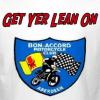Did a bit of research and it's all as clear as mud as usual with the jargon in the directives which would probably mean the local plod wouldn't have a clue either (and I don't blame them, who writes that stuff?). Here's a wee bit I found-
What is a trailer?
A road vehicle, usually (but not necessarily) two wheeled, towed by a motor vehicle.Given the above dictionary definition, it is fairly clear that anything attached to the towball and having wheels in contact with the ground is a trailer. This includes cars on ‘A’ frames and dollies. Bearing in mind that the unbraked towing limit of 750 kgs refers to Maximum Gross Weight (i.e. the figure on the towed cars VIN plate) and not to actual weight, it severely restricts the options. The only cars I know of with a MGW of less than 750 kgs is the Aixam range. These are around 450 to 550 kgs.
There are strict regulations on braked trailers and, whilst a braked ‘A’ frame attached to a towed car constitutes a braked trailer, it is not legal for transportation as it cannot comply with EC71/320. With car dollies, the situation is somewhat different. Under regulation 83 of the Road Vehicles (construction & Use) Regulations 1986 (SI.1986/1078) Amending Regulations, a car dolly, with a car in place, will be considered as two trailers. This is legal for recovery but, under the Road Traffic Regulations Act 1984 (Schedule 6) the combination is limited to 40 mph on motorways and dual carriageways and 20 mph elsewhere.
Note that there is a very specific difference between recovery and transportation. Recovery is the removal of a broken down vehicle to a place of safety. It does not include removing a rotor arm (for instance) and travelling the length and breadth of the country. The police are well aware of the difference due to the regulations covering Tachographs and Operators Licences. Recovery vehicles are exempt.
It is well known that some countries in the EEC tend to overlook the regulations (the UK included) but some countries don’t. The situation regarding enforcement could change at any time and, as a result, the only safe way to transport another vehicle behind a motorhome is on a car transporter trailer. Play safe! Don’t take the risk!
The regulations which cover this aspect of towing are:-
91/438/EEC covers driving licences.
71/320/EEC covers auto reverse braking systems and couplings.
S.I. 1971 No 450 Part III covers the obstruction of number plates.
94/20/EEC covers type approval of towing equipment and ‘S’ and ‘D’ values.
95/48/EEC covers Masses and Dimensions of M1 class vehicles.
E.T.R.T.O. 1991 section 13 covers wheels and tyres.
BSAU 113c covers 50mm ball and coupling dimensions.
BSAU 24a (1989) covers eye couplings and pin/jaw arrangements.
98/12/EEC covers brake linings and will be implemented in the UK from 1/4/01.And not strictly towing but applicable to motorhomes is EN1648-1 covers extra low voltage installations in Leisure Vehicles and Caravans.
In a nutshell, I've given up caring and shall stick to using either the rack or the trailer
GJ


